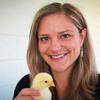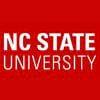Explore all the information on
Poultry management
Poultry management usually refers to the husbandry practices or production techniques that help to maximize the efficiency of production. Sound management practices are very essential to optimize production. Scientific poultry management aims at maximizing returns with minimum investment. A carefully controlled environment that avoids crowding, chilling, overheating, or frightening is almost universal in poultry farming. Cannibalism, which expresses itself as toe picking, feather picking, and tail picking, is controlled by debeaking at one day of age and by other management practices. The feeding, watering, egg gathering, and cleaning operations are highly mechanized. Birds are usually housed in wire cages with two or three animals per cage, depending on the species and breed, and three or four tiers of cages superposed to save space. Cages for egg-laying birds have been found to increase production, lower mortality, reduce cannibalism, lower feeding requirements, reduce diseases and parasites, improve culling, and reduce both space and labour requirements.
Something to consider. If we preheated and ventilated a house long enough prior to chick arrival, the need for a litter treatment would be drastically reduced, if not possibly eliminated. Litter treatments are used primarily because the cost of preheating and ventilating a house long enough prior to chick arrival to remove excess moisture...
Comments : 0
Recommendations: 0
Though broilers often appear to be evenly distributed throughout a house, more times than not our eyes are deceiving us. Figures 1 and 2 are of the tunnel fan and tunnel inlet ends of a 50' X 600' broiler house with 20-day-old birds. At first glance bird density appears fairly uniform but when examined closely, it becomes apparent that there are more birds near the tunnel doors (far right of Figure 2) than in any other area of the house. The question are, of course, is this...
Comments : 0
Recommendations: 0
The level of ammonia young chicks will be exposed to during the first week of their lives is determined to a large extent by what was done to the litter between the flocks. Towards the end of a flock, the birds are adding thousands of gallons of water to a house each day. During cold weather, reduced ventilation...
Comments : 0
Recommendations: 0
Windrowing has become a very popular method of managing litter between flocks. In order to get the most benefit out of windrowing, the litter needs to be relatively damp. How damp? Ideally, the litter moisture content would be between 25 and 35%. At this level of litter moisture, when you grab a handful of litter and squeeze it, it would...
Comments : 0
Recommendations: 0
During cold weather, fuel usage is a major factor in determining broiler a farm’s profitability. As a result,...
Comments : 0
Recommendations: 0
Chickens make different sounds for a plethora of reasons. Determining the reasons behind vocalizations and understanding how chickens use them is a great way to gain insight about their behavior. Some of the most common chicken vocalizations are: A rooster's crow A hen's "food call" Alarm calls A hen's post laying...
Comments : 1
Recommendations: 1
Dr. Piotr Stanislawski shares his experience with Engormix members on usual mistakes that he has encountered throughout his career....
Comments : 0
Recommendations: 4
Story by Jillian Ellison
Just over one third of the United States egg laying industry currently produces in cage-free environments, while companies pledge to use more ethically sourced ingredients in their production processes.
Keeping up with the increasing demand requires changing hen housing facilities. But to maintain production volumes, the hens must be comfortable and content, Darrin Karcher, associate professor in animal sciences and Extension...
Comments : 0
Recommendations: 1


Effects of methionine supplement sources and crude protein on Ross 708 male broiler performance
Suggested link
Ikele Chinyere (University of Nigeria, Nsukka) talks to Sam Shafer (PSA) about how producers can benefit from activating this gene. Let's Squawk About It is a monthly interview segment by the Poultry Science Association....
Comments : 0
Recommendations: 0
Kevin Downs (Middle Tennessee State University) talks to Sam Shafer (PSA) about research regarding possible color effects on the birds when feeding them. Let's Squawk About It is a monthly interview segment by the Poultry Science Association....
Comments : 0
Recommendations: 4
Peter van Horne (Wageningen Economic Research) mentions the need to discuss more of the issues (costs, environment, price, etc.) that arise with this change in poultry production....
Comments : 0
Recommendations: 1
Mark Allen (Lohmann Breeders) explains the urgency of understanding chicken behavior and talks about other current problems, during the Avicolas and Porcinos event in Buenos Aires, Argentina....
Comments : 0
Recommendations: 3
by Sam Shafer
Scientists and producers weigh the feasibility of on-farm carcass disposal in cases of foreign animal disease outbreaks
Biosecurity has always been a priority on farms. Because of the speed with which a poultry disease can spread through a flock, producers and researchers are constantly improving their practices for controlling animal disease outbreaks.
A new study, published recently in the ...
Comments : 0
Recommendations: 0
Northern fowl mites (Ornithonyssus sylviarum) are one of the more common ectoparasites (external parasites) that can be present in a flock. These mites live on their host throughout their life and feed on poultry blood. They are most commonly found around the vent, tail, and breast of the birds. Although these mites prefer poultry as a host,...
Comments : 0
Recommendations: 1
During IPPE 2022 in Atlanta, Edgar Oviedo-Rondón (North Carolina State University) talked about two projects where they worked together with companies to improve their decision-making process by using data. You can find more information on this program here: https://poultry.ces.ncsu.edu/the-poultry-decision-makers-workshop-series/....
Comments : 1
Recommendations: 1
Poultry farms act as an important source of transmission of antimicrobial-resistant (AMR) Salmonella to the environment as well as to humans. Indiscriminate and prophylactic use of antibiotics in poultry farms is one of the reasons behind it. Therefore, a cross-sectional study was conducted to determine the prevalence of Salmonella in broiler chickens, farm environments, as well as farmers to identify the risk factors for Salmonella colonization in broiler farms....
Comments : 2
Recommendations: 1
Introduction Brazilian egg production is based on intensive farming systems, which ensure greater yield in a smaller physical space. However, it favors the development of arthropod pests, such as the red mite Dermanyssus gallinae (De Geer) (Acari, Dermanyssidae). This mite feeds on poultry, causing weight loss, reduced egg production, blood spoliation anemia and, in more severe cases, death. Studies have shown that the red mite can carry Escherichia coli, Salmonella and...
Comments : 7
Recommendations: 4
...
Comments : 1
Recommendations: 0
A study was conducted to determine the effects of crude protein (CP) reduction with amino acid (AA) balanced diets on growth, carcass yields, litter characteristics, and ecological footprint of feeds in mixed-sex broilers. A total of 2,688 Cobb MV × 500 FF broilers were allotted to 4 treatments (14 replicates of 48 birds per pen) from 11 to 36 d of age reared in an open-sided barn. Dietary treatments included: 1) Control diet (C) with DL-Met+L-Lys+L-Thr, 2) C+L-Val 3) C+L-Val+L-Ile and...
Comments : 0
Recommendations: 4
It may be difficult to comprehend, but water actually doesn’t “flow” in drinker lines...it slowly drifts. In a way it is more appropriate to consider the flow of water in drinker lines as a pond more than as a rushing river. This holds true for a house with day-old birds or even market-age birds. Drinker line flow rates are fairly easy to calculate. For instance, a flock of 50-day-old broilers will consume roughly 85 gals/1,000 per day (Watkins, 2009). If there are...
Comments : 0
Recommendations: 0



.jpg&w=3840&q=75)












.jpg&w=3840&q=75)















